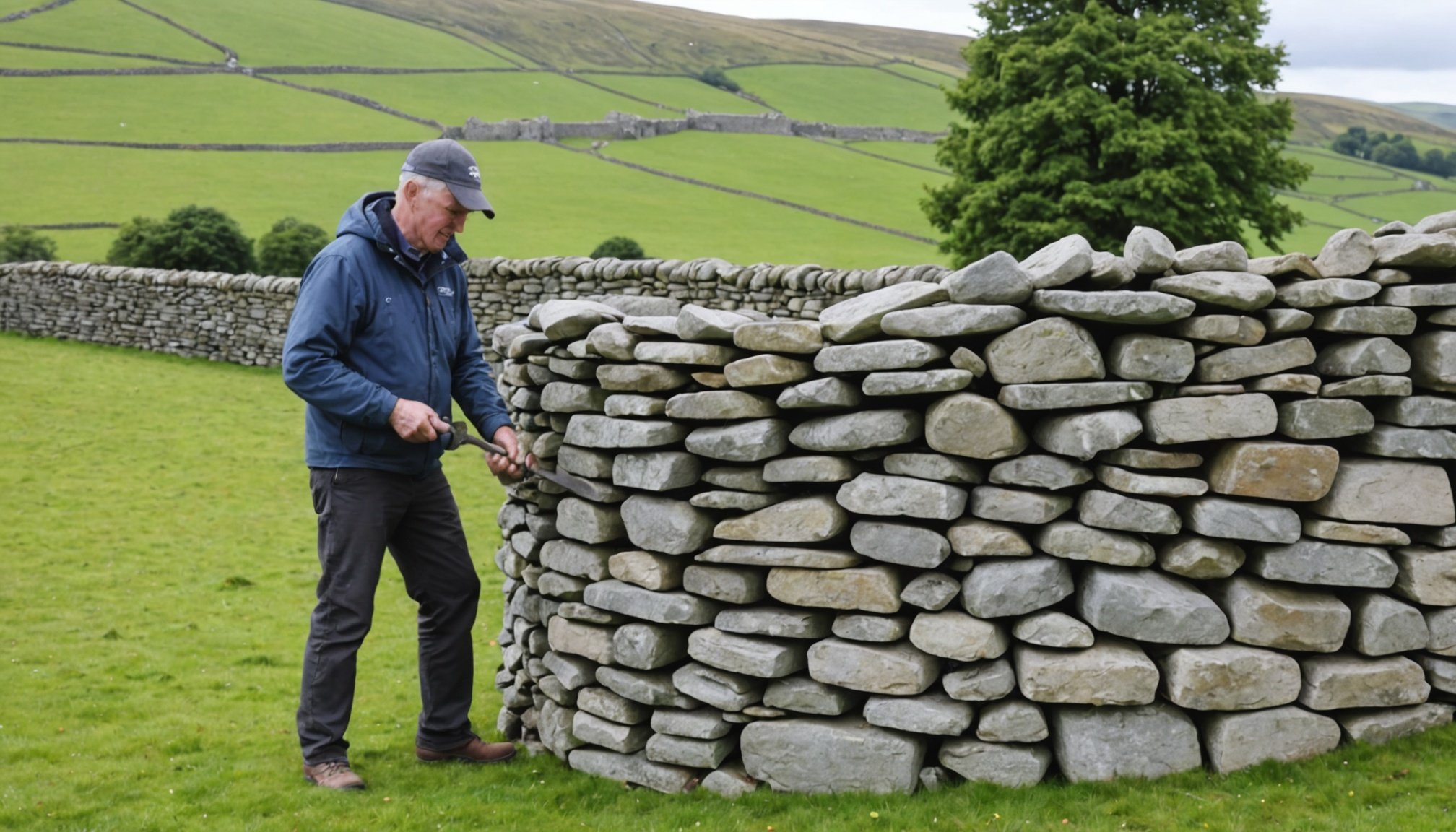Historical Context of Dry Stone Walls in Yorkshire Dales
The Yorkshire Dales is a region deeply woven with the fabric of historical techniques in dry stone wall construction. These walls are not merely boundary markers; they hold immense cultural significance and are emblematic of the Yorkshire heritage. Crafted without mortar, these remarkable structures have stood the test of time, largely due to the ingenious techniques passed down through generations.
In the past, the methods for constructing these walls evolved significantly. Initially, wallers relied on readily available local stones, fitting them together like a puzzle. As tools advanced, so did the precision and intricacy of the traditional construction methods. These walls not only defined property lines but also segmented farms for livestock management, reflecting the practical necessities of historical agrarian life.
Additional reading : Revamp your glasgow outdoor space: unlock the power of rain gardens for effective stormwater management
Notable historic dry stone walling practices include the use of small stones as packing between larger ones to increase stability, and the development of specific styles and patterns unique to each area, contributing to the distinct landscape character of the Yorkshire Dales. Thus, the preservation of these techniques is crucial, transcending mere construction to embody a celebrated aspect of regional identity and resilience.
Sourcing Local Stone and Materials
The use of local materials in dry stone wall repairs is crucial for preserving the cultural and visual integrity of the Yorkshire Dales. Relying on these regionally specific stones ensures continuity with historical methods and aesthetics. Conservation guidelines strongly advise against using non-native materials, as they can disrupt the unique landscape character.
Also read : Transform your london flat into a pet-friendly indoor retreat: crafting the perfect garden oasis
Exploring local quarries is an effective strategy for sourcing appropriate stone. These quarries provide materials with the right texture, colour, and durability that match traditional constructions. Recommendations for reputable suppliers in the Yorkshire Dales may require reaching out to the local conservation bodies or walling experts.
Understanding and adhering to conservation guidelines is critical. They often detail restrictions and practices for stone collection and usage, aimed at safeguarding the natural environment while supporting cultural preservation efforts. Collaborative community projects can enhance knowledge about responsible sourcing practices.
Finally, while local stones are preferred, the availability and environmental impact must be considered. Engaging with official conservation groups can offer insights and help access materials in a way that honours both tradition and sustainable practices, ensuring the longevity of these iconic structures.
Essential Tools for Dry Stone Wall Repair
Equipping yourself with the right tools is vital for effective dry stone wall repairs. Essential repair equipment includes chisels, hammers, and robust gloves. Chisels are indispensable for shaping stones to fit snugly without mortar. Hammers, especially those designed for dry stone work, help precisely split and shape rocks, while sturdy gloves are crucial for protecting hands from sharp edges and providing better grip.
When selecting walling tools, quality is paramount. Opt for those crafted from durable materials that can withstand repeated use. They should feel balanced and comfortable in your hand, enhancing both precision and control during the repair work. Hexagonal handles, for example, can provide a firm grip.
Safety is instrumental. Always prioritise safety practices while working. Protective eyewear shields eyes from flying stone fragments, whilst steel-toed boots offer foot protection. Additionally, practicing correct lifting techniques prevents back injuries, ensuring that your dry stone wall repair activities are both effective and safe. Engaging with experienced wallers for tool recommendations can further enhance your ability to repair these beautiful and historic structures whilst preserving their traditional aesthetics.
Step-by-Step Repair Techniques
Executing effective repair techniques for dry stone walls involves meticulous attention to detail and an appreciation of restoration methods. These processes not only ensure structural integrity but also uphold the cultural heritage embedded within these walls.
Preparation and Assessment
Inspecting the existing wall is crucial. Begin with a thorough assessment to identify areas needing repair. This step helps you gather materials that align with the wall’s original look, ensuring any intervention is seamless. Plan repairs considering the existing structure, and prioritise site safety by surveying the area for any potential hazards.
Dry Stone Laying Techniques
Proper stone selection and placement is vital for a successful repair. Select stones that match in size and texture with the original construction. Pay close attention to spatial alignment and spacing—these influence the stability of the structure. To maintain a traditional aesthetic, mirror the original stone pattern and placement techniques during repairs.
Finishing Touches and Maintenance
Conclude with finishing techniques that protect the wall. This includes capping the top securely and checking for weak spots. Regular maintenance, like clearing vegetation, helps preserve the wall’s appearance. Educating the community promotes awareness of dry stone wall care, ensuring enduring conservation.
Best Practices for Maintaining Traditional Aesthetics
Maintaining the traditional aesthetics of dry stone walls in the Yorkshire Dales is an art that requires care and precision. Balancing modern repair processes while preserving historic integrity is crucial. Preservation methods should focus on retaining original features such as stone patterns and alignment techniques.
Case studies often illustrate successful restorations. For example, heritage conservation projects in the region demonstrate how careful replication of the original stone style and meticulous attention to detail can help maintain authentic appearances. Such projects also highlight the importance of understanding the historical context of each wall before repairs commence.
Engaging with local conservation bodies provides a wealth of restoration practices. These organisations offer guidance rooted in cultural knowledge and can connect wallers with resources that uphold the wall’s historical character. Their expertise ensures adherence to best practices and guides the use of appropriate materials.
Incorporating these strategies, wallers effectively blend modern repair techniques with time-honoured methods. This results in repairs that respect the wall’s historical footprint while ensuring structural soundness, thus protecting the Yorkshire heritage for future generations to appreciate and enjoy.





